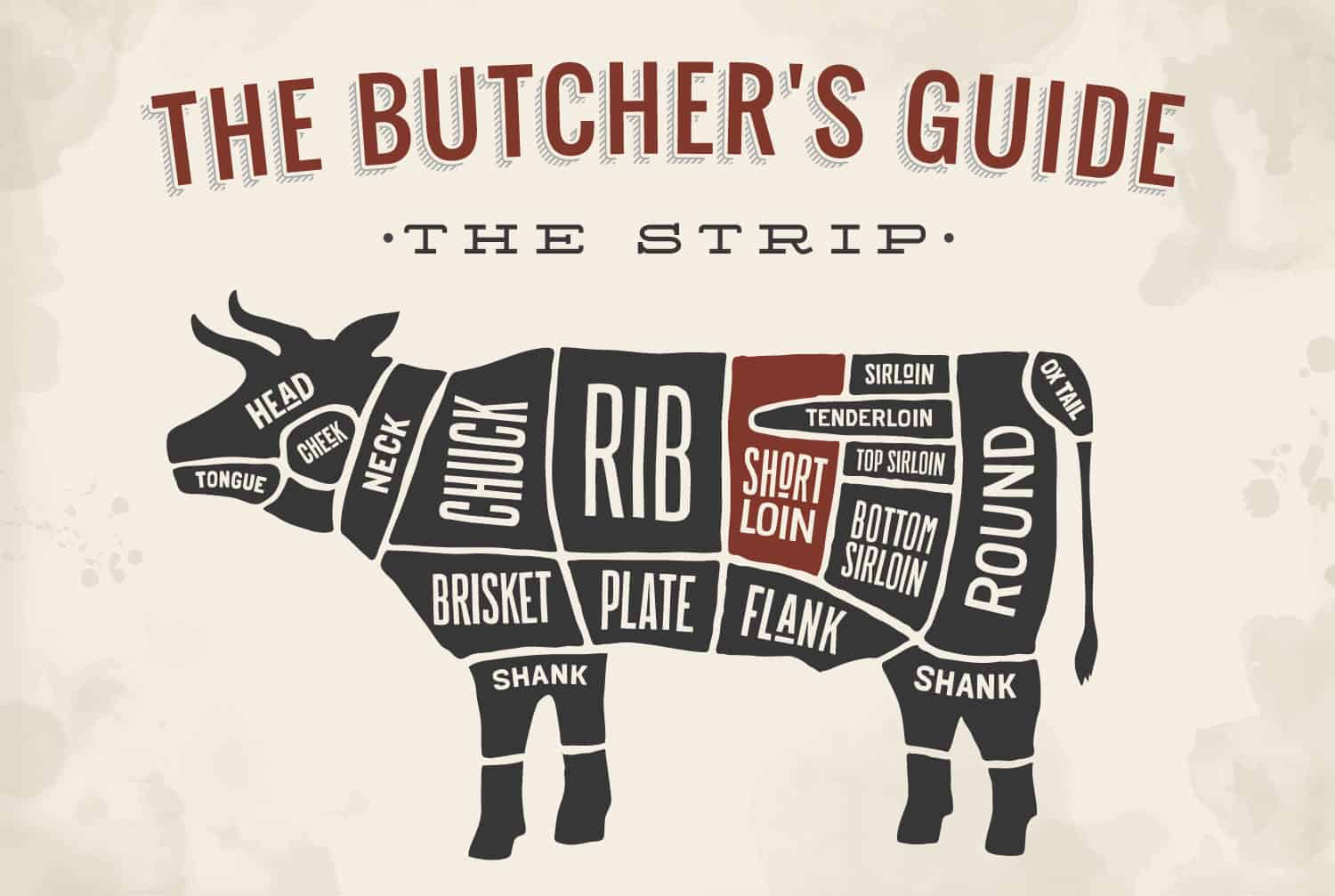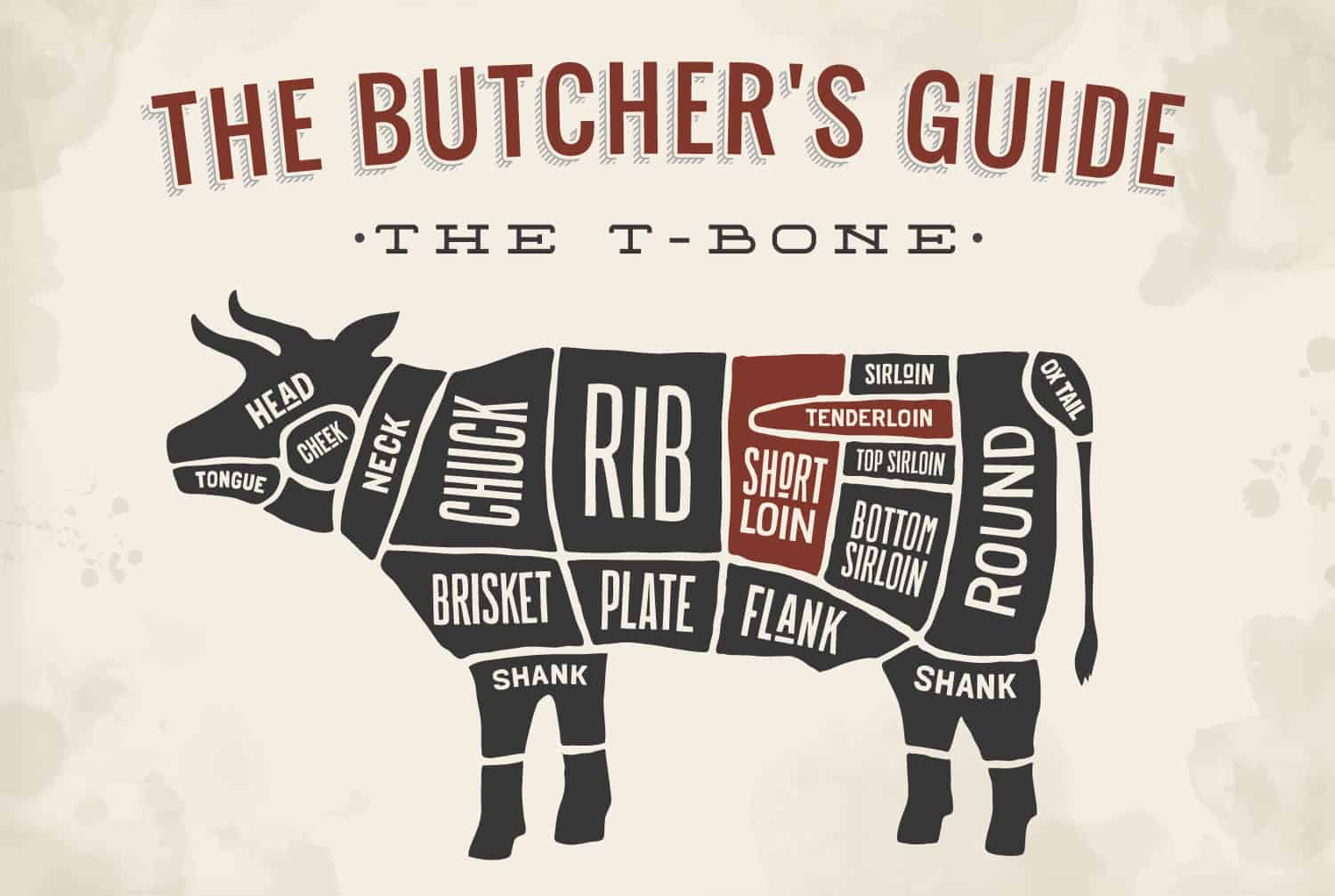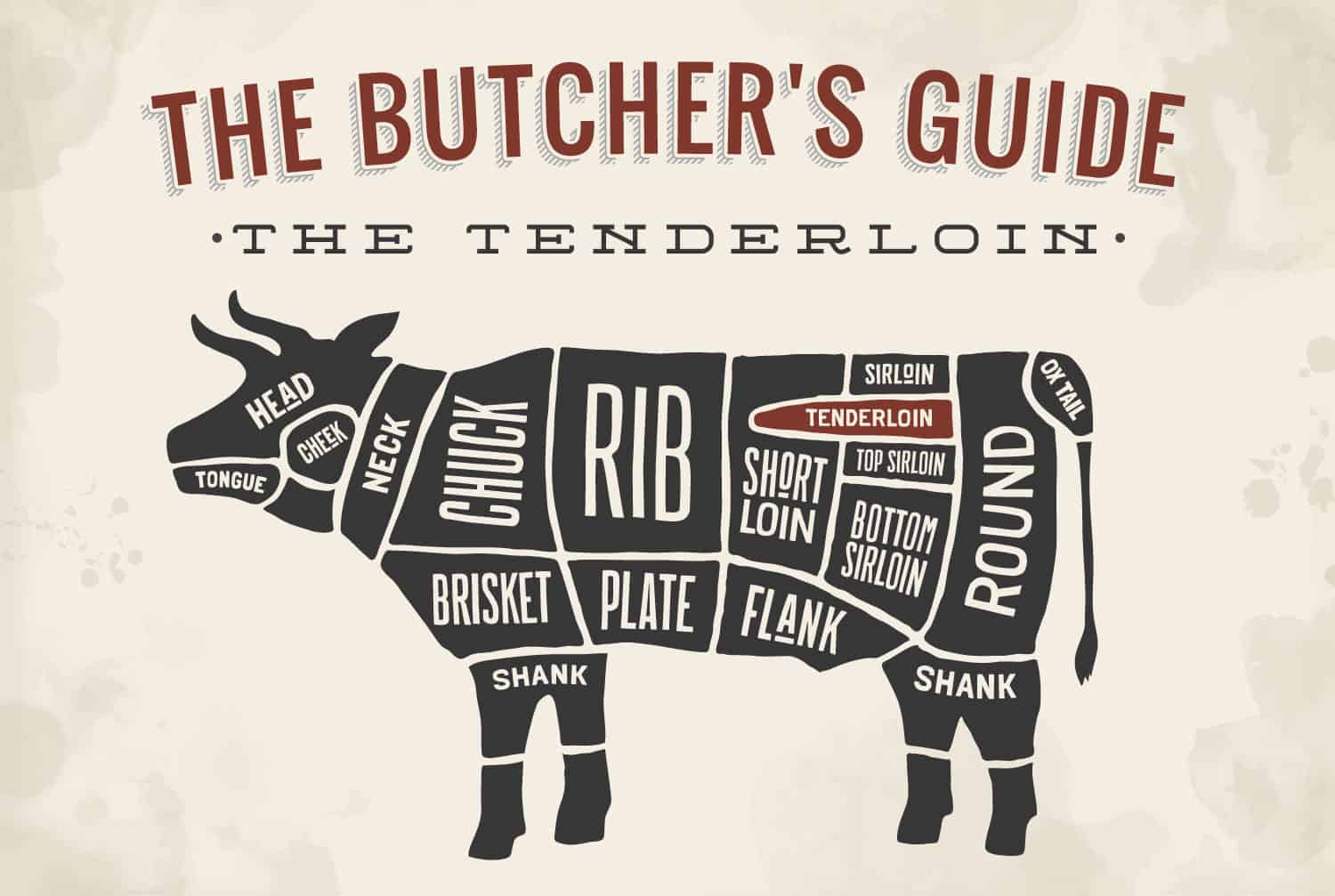Steak is a food of the gods. It’s meat – about as good as it gets.
But there are lots of different cuts of steak, and you can more or less break down a room of people based on their steak preference.
We’re not talking who goes for the bluest of the blue and who likes there’s cooked to a cinder. There’s a place for each of them, and there’s a whole extra level of analysis you can do about people based on how they like their steak.
But just from the different cuts of steak they choose, you can tell a lot about a person.
That’s something to say going in – the best steak cut is ultimately the one that’s right for you. The one that gives you that hit of savory protein umami flavor and gets your mouth watering.
Here, we’ll take a look at as many steak cuts as possible – because each of them is the best for someone.
New York Strip (Strip Steak, Top Sirloin)
The favorite of people who like their life lean, the New York Strip is a relatively small but mighty meat pocket which can give you soft, juicy tenderness – but if you overcook it, it’s a hockey puck.
That’s because it’s short of fat pockets. Fat – as fans of the ribeye will always tell you – means flavor, but in the case of the New York Strip, that’s not your issue.
Because fat also means forgiveness – While there’s fat in the meat, it can cook a little longer. The fat will render, basting the fibers of the mean and keeping it hot, juicy and tender.
The fewer fat pockets your steak has, the less forgiveness it’ll give you when you try to cook it.
The New York Strip, taken from near the back of the animal, in the short loin, has very little fat in it.
On the one hand, that’s a prepping bonus – less fat means less trimming, and less trimming means you get your meat cooking sooner.
On the other hand, it means it’s a steak cut that needs watching a lot more than some so that it doesn’t incinerate.
 That said, there’s some decent marbling in most New York Strip, so it’s not a case of putting it on the grill and immediately watching it turn to dust.
That said, there’s some decent marbling in most New York Strip, so it’s not a case of putting it on the grill and immediately watching it turn to dust.
In fact, compared to the likes of the ribeye, the T-bone or particularly the tomahawk, New York Strip’s a piece of cake. It’s just that like a piece of cake, let it go too long and what you have will be inedible.
There’s some chew left in the perfectly grilled New York Strip – people who choose it as the best steak cut want the experience and the mouthfeel of steak for their money.
But unless you especially want it well done, there should be a moderate tenderness in it too, so you get just enough chew to feel like you’ve had steak, and not so much that you feel like it’s hard work.
Cook it: This is a good grilling steak, because with less fat, there are fewer flare-ups, and more control of the head source. Give it some high direct heat to seal in the juices, for that succulent New York Strip flavor when cooked.
The Ribeye (Delmonico, Scotch Fillet, Spencer Steak, Entrecote)
It’s got a lot of names, has the ribeye. It’s been around the world and back again, and people love it everywhere it goes – for all they can’t agree what it’s called.
Why do people love it so much?
Major marbling is one big reason – fat pockets running throughout the meat mean when it’s cooked just right, it’s like the meat has been based in glory and ambrosia.
It’s a cut that will bring a “Hallelujah!” from an atheist, because that marbling is magic, like a gift from the meat-lover’s gods.
The fat content of the ribeye also intensifies the whole ‘beefiness’ of the steak flavor. It’s like beef…times beef. Beef squared, which is a heck of a thing to have swirling round your mouth at any moment.
The ‘eye’ of the rib is especially tender too, meaning you get a moment of deferred pleasure before you go for it. And then there are choirs of angels, all mooing in harmony.
 Cook it: With care, and not the first time to belly up to the grill. Ribeye’s high-fat content means when you cook it, it’s like surfing.
Cook it: With care, and not the first time to belly up to the grill. Ribeye’s high-fat content means when you cook it, it’s like surfing.
There will be unexpected waves of action, with flare-ups of a regular thing, and nothing you can afford to ignore. Remember though, fat means both flavor and forgiveness, so while it’s a temperamental cut to cook, it will also help you deliver great results from your steak cookery by giving you a buffer zone between cooking and killing the steak.
The T-Bone (Porterhouse)
The T-bone is the favorite of those who like a little from Column A, and a little from Column B.
The make-up of the T-bone is a slice of New York Strip, with a nugget of tenderloin attached, on the other side of the T-shaped bone which gives the cut its name.
Cut from the short loin, it brings the sense of a steak cut with a bonus. Whichever type of steak cut draws you to the T-bone, you get an extra taste and texture sensation for your money.
Perhaps one of the most primal cuts you can have (along with the tomahawk), you can be civilized with the T-bone, or you can pick it up and gnaw, letting your Inner Carnivore go wild.
What’s the difference between a T-bone and a porterhouse? More tenderloin for your money, cut further back.
There’s literally no bad with the T-bone or porterhouse.
Unless you’re a hardcore fan of one cut, in which case you can get more of that one cut for the same price as a T-bone, it’s the best of two excellent worlds, joined together by a suckable bone. Go wild, grab a T-bone and remember why meat tastes like pure satisfaction.
 Cook it: look for T-bones with consistent marbling throughout. Trim excess fat to cut down your flare-up headaches.
Cook it: look for T-bones with consistent marbling throughout. Trim excess fat to cut down your flare-up headaches.
Then, just as you have two cuts, get yourself two heat zones – medium and high. Sear on high to seal in the juices, move to medium to give the steak the love and heat it needs.
Result? Juicy, tooth-tearable steak that gives you two meat treats in a single steak.
The Tenderloin (Fillet Mignon)
The clue is in the name with the tenderloin. It comes from the loin, and it is pure tenderness in meat. The tenderloin is a melt-in-your-mouth cut with a low fat content.
Unlike most cuts though, it doesn’t need a great deal of fat to make the tenderloin sing and your taste buds get up and dance.
You get a rounded, beefy taste from the tenderloin with – if you cook it right – practically no chew. It’s so soft, it’s like a meat bonbon.
Is it the best flavour in the beast? Maybe not – that rounded, beefy taste is sumptuous, but if you stack it up against a ribeye steak, the tenderloin is probably the best cut for people who are less at home with carnivorous taste sensations.
The point about a tenderloin is that the textural sensation is a full-on part of the eating experience. Soft, almost simply-swallowable steak with a rounded, buttery beefy flavor makes the tenderloin a highly sought-after cut.
Cook it: The lower fat content in this cut means you should be relatively flare-free when cooking these beefy bonbons. Watch your cooking though – if you want to keep the tenderloin tender, you have to keep an eye out, because the tenderloin can overcook in a handful of heartbeats.
 As with many steak cuts, sear the cut first to seal in all its juices and keep the tenderloin true to its name. Then cook it medium rare (with an internal temperature of 130-135 degrees.
As with many steak cuts, sear the cut first to seal in all its juices and keep the tenderloin true to its name. Then cook it medium rare (with an internal temperature of 130-135 degrees.
It’s by no means the most tricky steak cut to cook, but you need a little finesse and a keen eye to get the best out of it.
There is no bad in steak cookery. There’s richness, variety, self-basting, softness, chew and a world made of languid, juicy joy. But which of them all is the best steak cut?
As we said going in, that depends on who you are, what speaks most to the carnivore inside you, and how you most enjoy your steak experience.
Somewhere in here, there’s probably the best steak cut for you. Maybe find a really good steakhouse and give yourself a tour of all the other cuts too, so you know what suits you best for sure.
